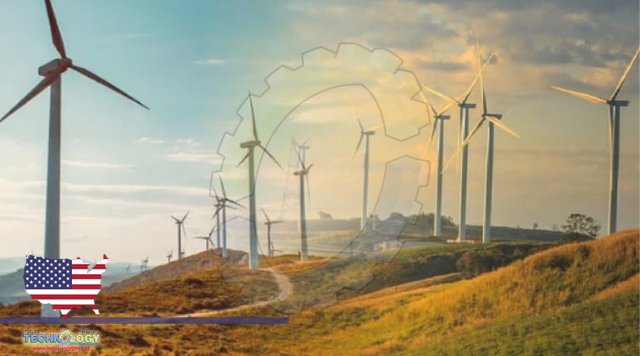The U.S Wind Industry is making plans to boost its wind production to compete with other major players and become an international hub for the renewable energy source.

The United States might be moving late, compared to major wind markets in Europe, but Biden is rapidly changing the face of the country’s wind energy sector, offering it the potential for rapid, widescale growth. President Biden believes the U.S. could swiftly grow its wind power to rival that of Europe and Asia, which have both already established strong wind energy sectors over the past few decades. U.S Wind Industry, The government is now aiming for 15GW of floating offshore wind capacity by 2035. The White House recently released a statement saying, “The Biden-Harris Administration is launching coordinated actions to develop new floating offshore wind platforms, an emerging clean energy technology that will help the United States lead on offshore wind.” U.S. Wind Industry, This new aim builds upon Biden’s existing target of 30 GW of offshore wind capacity by 2030, mainly coming from fixed-bottom installations. The government expects 15 GW could power over 5 million homes with clean energy. By investing heavily in the rollout of floating wind installations, the cost of the technology is expected to be reduced by around 70 percent by 2035, to $45 per megawatt-hour. The floating wind turbine technology means that the installations can be installed in deeper water than the fixed-bottom versions. This would expand America’s wind potential by allowing energy companies to access wind resources in untapped waters.
The Department of Energy (DoE) believes there are around 4.3 terawatts (4,300GW) of potential wind energy off the U.S. coastline, with only 1.5 terawatts available in areas where fixed-bottom turbines could be constructed. While the U.S. is fairly new to the offshore wind game, in November 2021 ground was officially broken on the country’s “first commercial-scale offshore wind farm”, showing the potential for rapid growth in the sector. Annual electricity in consumption in the U.S. stands at around 3.9 trillion kilowatt-hours, meaning that the country’s wind energy potential could go a long way to meeting this demand. In addition to the announcement of ambitious wind energy targets, Biden also rolled out his Bipartisan Infrastructure Law, which strongly supports the growth of America’s wind energy capacity. He also suggested the DoE will soon be offering around $50 million in research, development, and demonstration funding. Some investment will be available as a prize for a company that can optimize floating wind platform technologies, while $31 million in funding will be given to the ATLANTIS program to help develop the installations. By developing wind farms along most of the West Coast, Hawaii, and the Great Lakes, as well as part of the East Coast, the U.S. could soon become a wind energy hub, growing its capacity to compete against major international players in Europe and Asia. But much of this development will rely on improving the regulatory environment and reducing costs for wind turbine operations. U.S Wind Industry, The DoE introduced the ‘SunShot’ program around a decade ago to tackle high solar PV costs, quickly finding that most of the expenses were related to permitting costs, support hardware like inverters, and adapting the grid to respond to intermittent power. While wind turbines are expensive to produce, addressing other regulatory and related challenges could support the rapid development of America’s wind energy sector.
Source: This news is originally published by oilprice